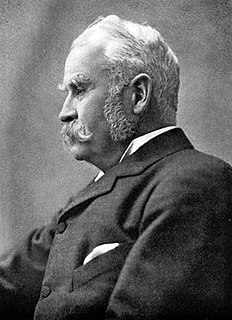Fairy-tale opera may refer to any of several traditions of opera based on fairy tales.

Opera is a form of theatre in which music has a leading role and the parts are taken by singers, but is distinct from musical theater. Such a "work" is typically a collaboration between a composer and a librettist and incorporates a number of the performing arts, such as acting, scenery, costume, and sometimes dance or ballet. The performance is typically given in an opera house, accompanied by an orchestra or smaller musical ensemble, which since the early 19th century has been led by a conductor.

A fairy tale, wonder tale, magic tale, or Märchen is an instance of a folklore genre that takes the form of a short story. Such stories typically feature entities such as dwarfs, dragons, elves, fairies, giants, gnomes, goblins, griffins, mermaids, talking animals, trolls, unicorns, or witches, and usually magic or enchantments. In most cultures, there is no clear line separating myth from folk or fairy tale; all these together form the literature of preliterate societies. Fairy tales may be distinguished from other folk narratives such as legends and explicit moral tales, including beast fables. The term is mainly used for stories with origins in European tradition and, at least in recent centuries, mostly relates to children's literature.
- Opéra féerie is a French genre of opera or opéra-ballet, often with elements of magic in their stories. [1]
- The English genre of "fairy opera" includes Gilbert and Sullivan's Iolanthe
- The German genre of Märchenoper (fairy-tale opera) has its roots in Italian opera. [2] Hänsel und Gretel is considered a key work of the genre. [3]
Opéra féerie is a French genre of opera or opéra-ballet, often with elements of magic in their stories. Popular in the 18th century, from the time of Jean-Philippe Rameau onwards, the form reached its culmination with works such as La belle au bois dormant by Michele Carafa and Cendrillon by Nicolas Isouard at the beginning of the 19th century.
Opéra-ballet is a genre of French Baroque lyric theatre that was most popular during the 18th century, combining elements of opera and ballet, "that grew out of the ballets à entrées of the early seventeenth century". It differed from the more elevated tragédie en musique as practised by Jean-Baptiste Lully in several ways. It contained more dance music than the tragédie, and the plots were not necessarily derived from classical mythology and allowed for the comic elements, which Lully had excluded from the tragédie en musique after Thésée (1675). The opéra-ballet consisted of a prologue followed by a number of self-contained acts, often loosely grouped around a single theme. The individual acts could also be performed independently, in which case they were known as actes de ballet.

Gilbert and Sullivan refers to the Victorian-era theatrical partnership of the dramatist W. S. Gilbert (1836–1911) and the composer Arthur Sullivan (1842–1900) and to the works they jointly created. The two men collaborated on fourteen comic operas between 1871 and 1896, of which H.M.S. Pinafore, The Pirates of Penzance and The Mikado are among the best known.


